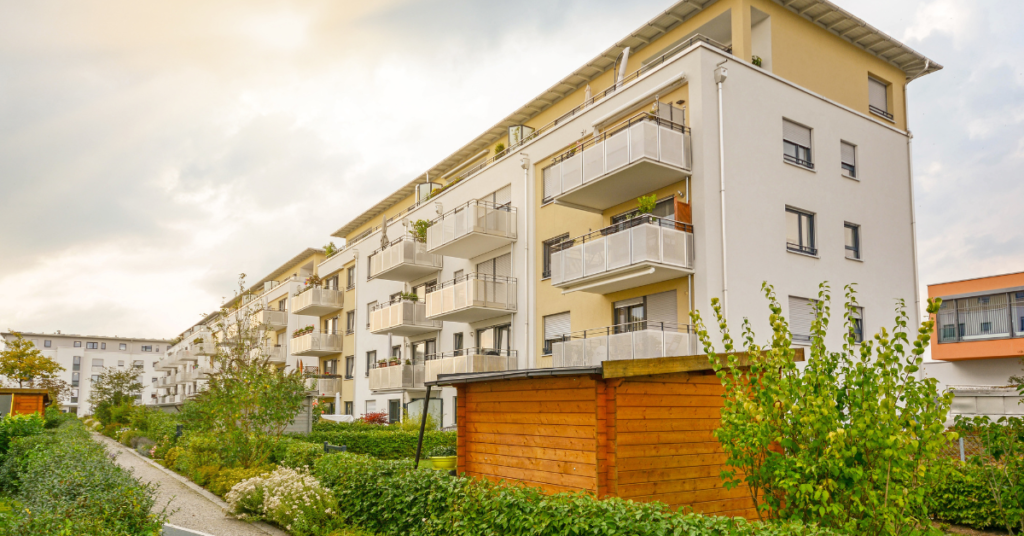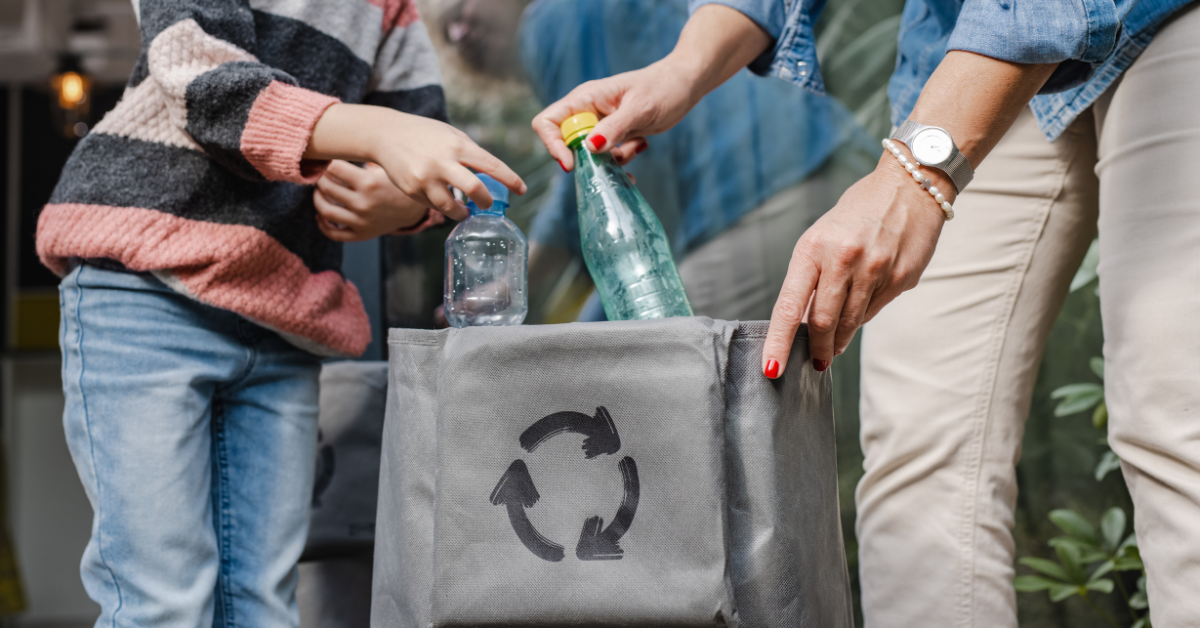A Guide to Living Sustainably in Urban Environments
Reading Time: 10 minutesHey there, city dwellers, environmental enthusiasts, and community activists! In this blog, we’re diving into the exciting realm of sustainable living in urban environments. While city life presents unique challenges, it also offers countless opportunities for positive change. Join us as we explore practical tips and actionable strategies to make your urban lifestyle not only…

Hey there, city dwellers, environmental enthusiasts, and community activists! In this blog, we’re diving into the exciting realm of sustainable living in urban environments. While city life presents unique challenges, it also offers countless opportunities for positive change.
Join us as we explore practical tips and actionable strategies to make your urban lifestyle not only eco-friendly but also vibrant, dynamic, and sustainable.
Table of Contents
Embrace Public Transportation

Let’s kick off our journey by tackling the bustling city streets and the topic of public transportation. Efficiently using public transit systems and embracing alternative modes of transportation like biking and walking can significantly reduce your carbon footprint, improve air quality, and enhance your overall well-being.
Here are tips for making your commute seamless and sustainable:
Public Transit
- Plan Your Route: Use transit apps or websites to plan your route, taking into account schedules, transfers, and any service disruptions.
- Utilize Real-Time Updates: Stay informed about delays or service changes by subscribing to real-time alerts from transit agencies or using mobile apps that provide live updates.
- Optimize Timing: Avoid peak hours if possible to minimize overcrowding and delays. Consider adjusting your schedule to take advantage of off-peak fares and less crowded trains or buses.
- Have Payment Ready: Speed up boarding by having your fare payment ready in advance, whether it’s a transit card, mobile ticket, or exact change.
- Respect Priority Seating: Offer priority seating to elderly, disabled, pregnant, or other passengers in need. Be mindful of keeping aisles and doorways clear to facilitate boarding and alighting.
- Secure Belongings: Keep your belongings secure and out of the way to ensure the comfort and safety of fellow passengers. Use backpacks or bags that can be easily stored under seats or on luggage racks.
- Be Courteous: Practice good etiquette by refraining from loud conversations, playing music without headphones, or engaging in disruptive behavior that may disturb others.
- Report Issues: Report any safety concerns, maintenance issues, or suspicious activities to transit staff or authorities promptly.
Biking and Walking
- Plan Your Route: Choose bike-friendly or pedestrian-friendly routes using maps or mobile apps that highlight bike lanes, sidewalks, and low-traffic streets.
- Invest in Safety Equipment: Wear a properly fitted helmet and reflective clothing to increase visibility and protect yourself in case of accidents. Equip your bike with lights, reflectors, and a bell for added safety.
- Follow Traffic Laws: Obey traffic signals, signs, and rules of the road when biking or walking. Use designated bike lanes and crosswalks whenever possible, and yield to pedestrians as needed.
- Secure Your Bike: Use a sturdy lock to secure your bike when parked, preferably to a fixed object like a bike rack or pole. Consider registering your bike with local authorities or using GPS tracking devices for added security.
- Practice Defensive Cycling/Walking: Stay vigilant and anticipate potential hazards by scanning your surroundings, signaling your intentions, and maintaining a safe distance from vehicles and pedestrians.
- Stay Visible and Predictable: Make eye contact with drivers and pedestrians to ensure they see you. Signal your turns, stops, and lane changes clearly to communicate your intentions and avoid collisions.
- Maintain Your Bike: Regularly inspect and maintain your bike, including checking tire pressure, brakes, and gears. Keep it clean and lubricated to ensure smooth and safe operation.
- Stay Hydrated and Energized: Carry water and snacks with you to stay hydrated and energized during longer rides or walks. Dress appropriately for the weather and consider carrying a small first-aid kit for emergencies.
Reduce, Reuse, Recycle

Time to master the art of the 3Rs in the concrete jungle. Reducing, reusing, and recycling are crucial elements of urban sustainability as they contribute to minimizing waste generation, conserving resources, reducing pollution, and promoting a more circular economy. Embracing these practices in urban settings is especially important due to the high population density and consumption rates typically found in cities.
Here’s a breakdown of their importance and practical tips for implementing them in urban living:
1. Reducing Waste
Reducing waste helps lessen the strain on landfills, conserves resources used in manufacturing, and minimizes pollution associated with waste disposal.
Practical Tips:
- Opt for products with minimal packaging or choose bulk options to reduce packaging waste.
- Avoid single-use items like plastic utensils, straws, and bottles by opting for reusable alternatives.
- Buy only what you need and avoid impulse purchases to minimize food and product waste.
2. Reusing Items
Reusing items extends their lifespan, reduces the demand for new products, and conserves resources.
Practical Tips:
- Use reusable bags for groceries and shopping instead of single-use plastic bags.
- Repair and repurpose items instead of discarding them when they’re damaged or worn out.
- Donate or sell gently used clothing, furniture, and electronics instead of throwing them away.
3. Recycling Materials
Recycling reduces the need for raw materials, saves energy in manufacturing processes, and decreases greenhouse gas emissions.
Practical Tips:
- Familiarize yourself with your city’s recycling program and guidelines to ensure proper sorting and disposal of recyclable materials.
- Rinse and clean recyclables before placing them in the recycling bin to prevent contamination.
- Look for opportunities to recycle items beyond traditional materials, such as electronics, batteries, and textiles.
Optimize Energy Usage
In urban areas, let’s focus on conserving energy. Start by considering energy-efficient appliances and lighting solutions. They can significantly reduce electricity usage while keeping your living space comfortable.
Investing in energy-efficient appliances, like refrigerators, washing machines, and air conditioners, can greatly lower your energy consumption. Look for appliances with high Energy Star ratings, as they’re designed to use less energy without sacrificing performance. Also, match the size and capacity of appliances to your household’s needs, as larger ones tend to consume more energy.
Opting for LED lighting is another effective way to cut down on energy usage in your home. LED bulbs use less energy than traditional incandescent bulbs and last longer, reducing the need for replacements. Consider adding dimmer switches or motion sensors to further optimize lighting usage and reduce unnecessary energy waste.
Making small adjustments can also help minimize energy consumption in apartments and small living spaces. For example, sealing drafts around windows and doors prevents heat loss during colder months, reducing the need for heating. Using curtains or blinds to control natural light and temperature can also decrease reliance on artificial lighting and heating or cooling systems.
Encourage energy-saving habits among household members, like turning off lights and unplugging electronics when not in use. Smart home devices, such as programmable thermostats and smart power strips, can automate energy-saving routines based on your lifestyle and schedule.
Cultivate Community Gardens

Turn your concrete surroundings into green havens with community gardens. Community gardening in urban spaces offers numerous benefits, ranging from promoting sustainable food production to fostering social connections and enhancing urban green spaces.
To join or initiate community gardening initiatives in urban spaces, consider the following steps:
- Research Existing Initiatives: Look for community gardens or urban farming projects in your area and inquire about opportunities to get involved. Local government websites, community centers, and social media platforms may provide information on existing initiatives.
- Connect with Local Organizations: Reach out to local environmental organizations, gardening clubs, or community associations that may be involved in community gardening efforts. Attend meetings, workshops, or events to network with like-minded individuals and learn about potential collaboration opportunities.
- Start Your Initiative: If there are no existing community gardens in your area, consider initiating one yourself. Identify potential sites for gardening, such as vacant lots, rooftops, or unused land in parks or public spaces. Obtain permission from landowners or local authorities, and engage community members to gauge interest and support for the project.
- Plan and Organize: Develop a clear vision and goals for the community garden, including its purpose, structure, and management. Establish guidelines for participation, resource allocation, and decision-making processes. Create a gardening schedule, organize workdays, and allocate responsibilities among participants.
Growing food in limited urban spaces like balconies or windowsills is also feasible and rewarding. Here are some tips for urban gardening in small spaces:
- Choose Suitable Plants: Select compact or dwarf varieties of vegetables, herbs, and fruits that are well-suited to container gardening and limited space conditions. Consider factors such as sunlight exposure, temperature, and water requirements when choosing plants.
- Use Containers Wisely: Optimize space by using containers of varying sizes and shapes, such as pots, hanging baskets, or vertical planters. Ensure that containers have adequate drainage holes and use lightweight, porous materials like plastic, ceramic, or fabric to promote proper airflow and moisture retention.
- Maximize Vertical Space: Utilize vertical space by installing shelves, trellises, or hanging planters to grow plants vertically. Train vining or trailing plants to climb trellises or walls, and use hanging baskets or wall-mounted planters to save floor space.
- Provide Adequate Light: Place containers in locations with sufficient sunlight exposure, such as south-facing windows or balconies, to ensure optimal plant growth and productivity. Consider using supplemental lighting, such as grow lights or fluorescent bulbs, for plants that require additional light.
- Practice Water Conservation: Use water-efficient irrigation methods, such as drip irrigation or self-watering containers, to conserve water and minimize runoff. Mulch the soil surface with organic materials like straw or compost to retain moisture and suppress weed growth.
- Maintain Soil Health: Use high-quality potting mixtures or compost blends specifically formulated for container gardening to provide essential nutrients and promote healthy root development. Regularly monitor soil moisture levels and adjust watering frequency to prevent waterlogging or dehydration.
- Implement Sustainable Practices: Embrace sustainable gardening practices such as composting kitchen scraps, using organic fertilizers, and avoiding synthetic pesticides and herbicides. Incorporate companion planting techniques to enhance biodiversity and natural pest control in small urban gardens.
Support Local and Sustainable Businesses
City life offers a plethora of choices, and we’re here to guide you toward sustainable ones. The significance of supporting local and sustainable businesses is immense in living sustainably in urban environments. However, identifying businesses and products that prioritize sustainability in your food, clothing, and household purchases requires a bit of research and mindfulness.
Here are some tips to help you find those gems that align with your values:
1. Research and Certifications
- Look for certifications and labels that indicate sustainable practices, such as USDA Organic, Fair Trade Certified, Rainforest Alliance Certified, or Global Organic Textile Standard (GOTS) for clothing.
- Research the company’s sustainability initiatives, including their supply chain transparency, environmental impact assessments, and social responsibility commitments.
2. Local and Small-Scale Businesses
- Support local farmers, artisans, and businesses prioritizing sustainable practices and ethical sourcing.
- Visit farmers’ markets, craft fairs, and independent boutiques to discover unique, locally made products with minimal environmental footprint.
3. Transparency and Accountability
- Choose brands and retailers that are transparent about their sourcing, manufacturing, and labor practices.
- Look for companies that publish sustainability reports or provide detailed information about their product lifecycle, including materials used, production processes, and social impact.
4. Quality Over Quantity
- Prioritize quality over quantity when making purchases to reduce consumption and minimize waste.
- Invest in durable, long-lasting products made from high-quality materials that can withstand wear and tear, reducing the need for frequent replacements.
5. Circular Economy and Secondhand Market
- Embrace the circular economy by purchasing pre-owned or refurbished items through thrift stores, vintage shops, or online marketplaces.
- Extend the lifespan of products by repairing, repurposing, or upcycling them instead of discarding them when they’re no longer in use.
6. Environmental and Social Impact
- Consider the environmental and social impact of your purchases, including factors such as carbon footprint, water usage, waste generation, and worker rights.
- Look for brands and products that prioritize renewable energy, waste reduction, ethical labor practices, and community engagement.
- Consumer Advocacy and Education
- Stay informed about sustainability issues and consumer advocacy initiatives related to food, clothing, and household products.
- Join consumer advocacy groups, sign petitions, and support campaigns that promote sustainability and hold companies accountable for their actions.
8. Community Recommendations and Reviews
- Seek recommendations from friends, family, and online communities who share similar values and interests in sustainability.
- Read reviews and testimonials from other customers to learn about their experiences with specific brands and products.
- Stay Mindful and Critical
- Be mindful of greenwashing tactics used by companies to exaggerate their environmental credentials.
- Scrutinize marketing claims and labels to ensure they are backed by credible certifications and transparent practices.
Practice Water Conservation

Living sustainably in urban environments requires water conservation. It’s essential for both environmental sustainability and cost savings, particularly in city apartments and condos. With water resources limited in urban areas and the risk of shortages, reducing water usage is vital. Here’s why water conservation matters in city dwellings, along with practical tips and devices for urban lifestyles.
Conserving water in city apartments and condos eases the strain on local water supplies and reduces the energy needed for treatment and distribution. By cutting water usage, you can lower utility bills and support a more sustainable urban environment. Simple tips include promptly fixing leaks, taking shorter showers, and turning off faucets when not in use.
Installing water-saving devices like low-flow showerheads, faucet aerators, and dual-flush toilets can significantly reduce water usage without compromising performance. Smart irrigation systems for houseplants or balcony gardens can optimize water use in urban living spaces.
Rainwater harvesting systems can collect rainwater for non-potable uses like watering plants, conserving municipal water supplies, and reducing runoff pollution. Graywater recycling systems treat wastewater from sinks, showers, and washing machines for reuse, further cutting water consumption.
Educating residents about water conservation and providing resources for implementing water-saving measures can cultivate sustainability in city apartments and condos. By adopting these tips and devices, urban dwellers can preserve water resources and create more resilient communities in densely populated areas.
Engage in Community Initiatives
Community involvement is essential for urban sustainability. Joining local environmental organizations and initiatives allows you to positively impact your city’s landscape and contribute to a greener, healthier community. Here are some tips for getting involved:
1. Research Local Organizations
Start by researching environmental groups in your area focused on clean energy, waste reduction, conservation, and urban greening. Check websites, social media, and community bulletin boards for information.
2. Attend Events and Meetings
Participate in meetings, workshops, and events hosted by local environmental organizations to learn about their mission and volunteer opportunities. These gatherings allow connecting with like-minded individuals and engaging in meaningful projects.
3. Volunteer for Clean-up Efforts
Many groups organize clean-up events to remove litter from parks, streets, and waterways. Volunteering is a hands-on way to enhance your urban landscape and bond with fellow volunteers.
4. Advocate for Green Policies
Get involved in advocacy efforts to support environmental sustainability in your community. Write letters to elected officials, attend public hearings, and join grassroots campaigns to raise awareness and build support for green initiatives.
5. Join Community Gardens
Community gardens offer opportunities to connect with nature and promote urban biodiversity. Joining allows you to engage in gardening activities, build relationships with other gardeners, and contribute to local food security.
6. Support Local Environmental Businesses
Patronize businesses prioritizing sustainability by purchasing eco-friendly products and services. Supporting these businesses helps create demand for green products and services, fostering a local green economy.
7. Educate and Inspire Others
Share your passion for environmental conservation with friends, family, and colleagues. Encourage them to join you in volunteering, adopting sustainable practices, and advocating for a greener urban landscape.
Conclusion: Living Sustainably in Urban Environments
The tips above are more than just practices, they’re lifestyle choices that can enhance your urban experience. Ready to embrace sustainable urban living? Contact Green Ocean Property Management today to discover our guide to living sustainably in urban environments. Let’s explore eco-friendly practices tailored to your urban lifestyle, reducing your environmental footprint without sacrificing convenience.
Don’t wait—reach out now and join us in creating a greener, healthier future with Green Ocean Property Management!
6 Signs It’s Time You Hire a Property Manager
Reading Time: 4 minutesOwning a rental property may seem easy at first. However, the reality of property management can quickly become overwhelming, consuming your time and energy. The industry standard for time spent on property management is approximately 4 hours per month per rental property. This amounts to about 48 hours per year for day-to-day management and operations….
How to Choose the Right Property Management Company
Reading Time: 10 minutesOwning investment properties and rental real estate can be an excellent way to generate passive income and build long-term wealth through real estate. However, effectively managing these properties takes considerable time, effort, and expertise. That’s why partnering with a reliable property management company is so valuable for property owners. This guide will walk through key…
A Guide to Massachusetts Tenant-Landlord Laws
Reading Time: 11 minutesNavigating the legal landscape of rental housing can be incredibly complex, especially for owners and managers of Massachusetts properties. State statutes, city ordinances, federal regulations, and case law precedents intertwine to create a web of obligations and best practices for both landlords and tenants to follow. Even experienced real estate investors can trip up over…








